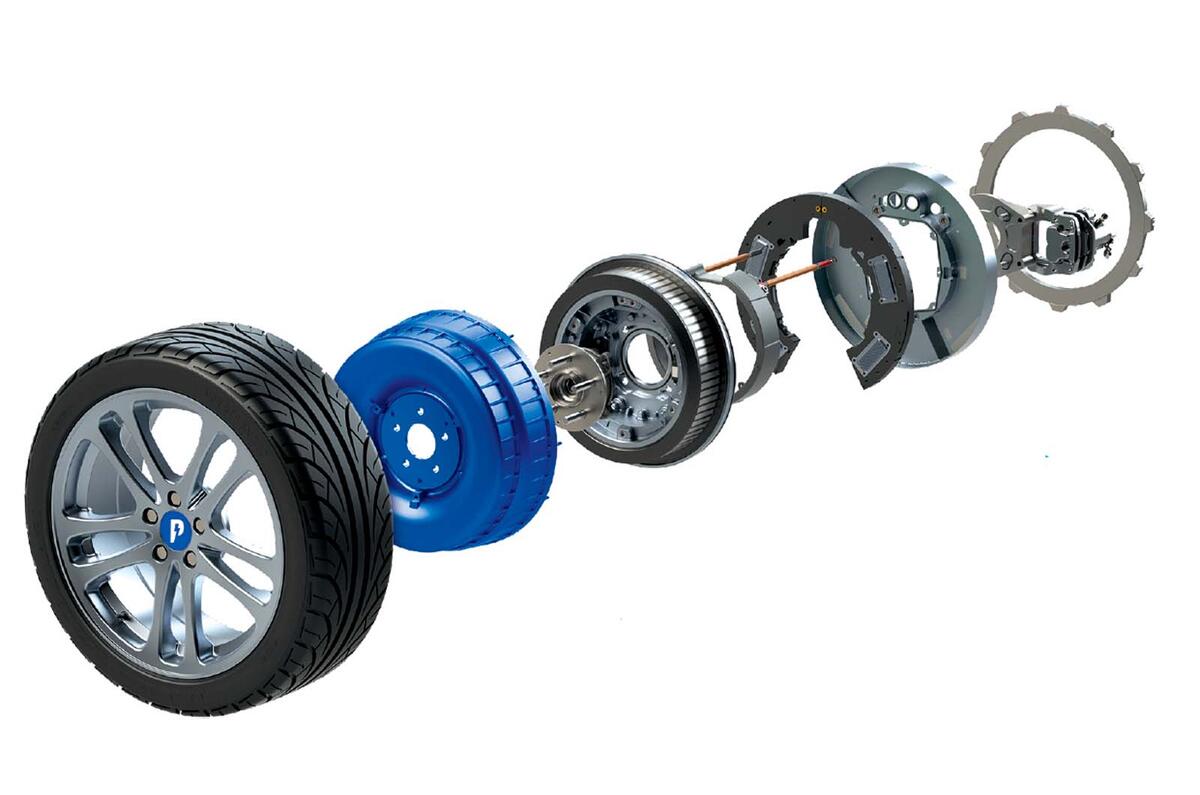In-wheel motors (IWMs) have been around since the world got serious about electric propulsion. GM’s Autonomy of 2002 concept was an FCEV with a skateboard chassis propelled by IWMs. GM had working demonstrators, including a Chevrolet S-10 pick-up with IWMs driving the rear wheels plus a single motor at the front.
For the past 15 years, Protean Electric has worked on nothing else. Since we first reported on the Farnham-based company back in 2017, it has continued to develop the technology and amassed extensive knowledge along the way.
The latest Gen 5 Proteandrive IWM (PD18 Gen 5) has completed a validation programme and, claims the company, sets a new industry standard for IWMs, producing 1106lb ft and 138bhp and weighing 39kg.
Two motors in a front- or rear-wheel-drive configuration give peak power of 276bhp, while four-wheel drive gives 553bhp. Maximum speed with the motors is 140mph.
The IWM has an integrated disc brake, fits in an 18in wheel and is validated for use in mainstream cars and light commercials, meeting 15-year and 186,000-mile durability requirements. The motors were subjected to severe shock, vibration, thermal cycles, sand, dust, water and chemical contamination during tests.
The appeal of IWMs lies mainly in the packaging. In this case the entire drive unit fits inside the wheel, including the inverter, which manages energy in and out and handles the transition between AC and the DC current from and to the battery.
A conventional e-axle set-up with motor and transmission on the car’s centreline and driveshafts to each wheel creates an incompressible package that can’t be part of a front or rear crumple zone, and the same applies to ICE cars.
By removing these packages the wheels can be moved closer to the car’s corners, freeing up space inside. The other plus point is improved efficiency and range, because there are no losses from reduction transmissions or drivetrain components.
Protean has spent years commissioning and studying independent analysis of potential issues such as unsprung weight, but an early study by Lotus Engineering concluded that unsprung weight isn’t an issue at all.
Essentially, the heavier a car is the less of an effect it poses, and any effects of unsprung weight can be compensated for with suspension and damper tuning.
The first PD18 is designed for 400V architectures, and the company expects to have an 800V version ready by the end of the year.





Join the debate
Add your comment
Trigano has built motorhomes with the conventional ICE driving the front wheels and in-wheel electric motors as the back. Removes the need for a special system for charging. BUT how easy are these wheels to steal?
Anyone familiar with the vintage Technics 1200 turntables will know that the record platter forms an integral part of the motor structure, although I think it uses DC. Japanese direct drive turntables as opposed to belt drive types in the olden days had a similar set-up, although their designs drove the centre spindle like an axle rather than the entire platter. They also apply back emf to stop/brake the Technics 1200 turntable quickly for professional use such as queuing etc. One of the reasons it's stood the test of time and is so robust.
Although I do indeed love the idea of IWMs, the fact that you need at multiples of 2 per 4 wheel vehicle is surely the factor that is limiting car manufacture interest. I would guess that the motor is the most expensive part of an EV drivetrain, so doubling the motor while removing the driveshafts and other assosiated parts is probably still more expensive than the current EV setup.
Maybe there will be a point when battery tech becomes cheap enough, it could offset the cost increase of IWMs as their efficiency, let alone their packaging benefits must be what car manufacturers are craving right now so they can reduce car sizes and provide the greater range customers are after.